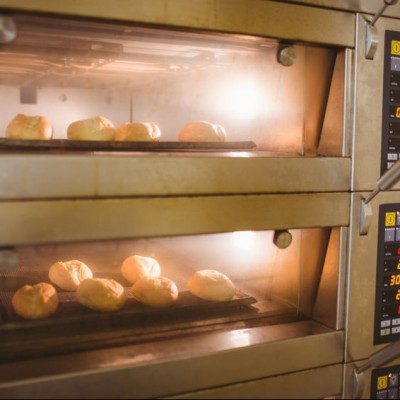
Advanced Glycation End-Products (AGE) could be a concern for baking.High heat is commonly used for food preparation when frying, roasting and baking. South Asians (including residents of Pakistan, India, Bangladesh, Bhutan, Maldives and Sri Lanka) use frying as a food preparation method more often than other countries. There is a phenomenon that these areas have a four times greater risk of heart disease than the general population.1 This phenomenon leads to the hypothesis that a positive connection exists between high-heat food preparation and susceptibility to coronary heart disease (CHD).2
This hypothesis has a theological basis. High heat food preparation could generate neo-formed contaminants (NFCs). NFC formation is directly proportional to heat treatment during food processing. They are formed naturally during thermal processing of food through complex chemical reactions. Examples of NFCs are trans fatty acids (TFAs) and Maillard reaction products including advanced glycation end-products (AGEs) and acrylamide.2
TFAs are one kind of fatty acid. They are formed during the partial hydrogenation of vegetable oils and in small amounts during refining of vegetable oils. Additionally, significant amounts of TFAs are also present when oil/fats are reused.
TFA and CHD
TFA consumption is associated with CHD in humans. TFAs increase low density lipoprotein (LDL), commonly referred to as “bad” cholesterol, while decreasing high density lipoprotein (HDL), and therefore, increase the risk of heart disease. Approximately 5 g/d of TFA is associated with a 23% increase in the risk for CHD.2 FDA began requiring that trans fat be listed on the Nutrition Facts label in January 2006.3 Companies can make the claim of “0 grams of trans fat” if the food contains less than 0.5 grams of trans fat per serving.3 World Health Organization recommends TFA consumption as < 1% of daily energy intake.2
Advanced glycation end-products (AGEs) are formed when the temperature is higher than 150oC.2 Under high temperature, carbohydrates are broken down to monosaccharides and protein is degraded to amino acids. Monosaccharides and amino acids then react with each other, which is known as the Maillard reaction, and this reaction forms the irreversible AGEs. The Maillard reaction is a large component in the baking process. The Maillard reaction found in baking produces a high level of AGEs. The high level of AGEs is of concern to our health.
Human and animal studies highlight that AGEs can result in endothelial dysfunction, inflammation and oxidative stress, which may lead to hypertension and atherosclerosis. The hypertension and atherosclerosis can lead to CHD disease.2 Dietary AGE intake > 15,000 to 16,000 kU/d is considered to increase risk for CHD.2
At this time,there is no direct research to support that the high heat preparation hypothesis NFC formation is directly proportional to heat treatment during food processing, and the NFCs can lead to CHD. CHD researchers suggest reducing NFCs in food by following these methods: lower cooking temperatures,2 avoid snacks that are cooked in high-temperature oils,1 and try not to boil oils.
Reference
- “Too Much Heat in the Kitchen Increases Risk of Heart Disease.” CNN. Cable News Network, 5 Nov. 2016. www.cnn.com/2016/11/04/health/high-temperature-cooking-increases-heart-disease-risk/. Accessed 17 Nov. 2016.
- Kakde, Smitha, Raj S. Bhopal, Swati Bhardwaj, and Anoop Misra. “Urbanized South Asians’ Susceptibility to Coronary Heart Disease: The High-heat Food Preparation Hypothesis.” Nutrition (2016): n. pag.
- “FDA Cuts Trans Fat in Processed Foods.” U.S. Food & Drug Administration. N.p., 20 May 2016. www.fda.gov/ForConsumers/ConsumerUpdates/ucm372915.htm. Accessed 17 Nov. 2016.

